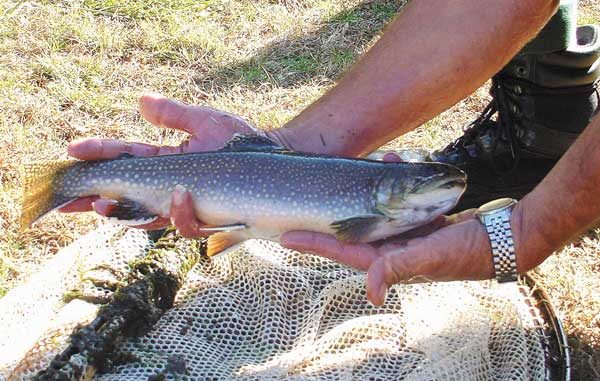
I am a fly fisher but not an elitist fly fisher because once in a while, I’ll fish with worms — without reservations and without guilt.
It matters little to me that some fly fishers look at worm fishers with scorn. It takes skill to catch a trout, no matter what method you use.
When I was a boy, I lived near Lake James in Burke County, and the first fish I caught was a bluegill. I caught it with a red worm.
In my early 20s, I settled in Asheville and fished what then were called “general trout waters.” That was 40 years go, and we didn’t have all the stream classifications we have today.
We had general waters, which were stocked, and we had wild trout waters, which were not stocked. The first two years I lived in the high country, I fished exclusively with worms. Then I met Al Geremonte, the outdoor writer for the Asheville Citizen-Times. I was attending what was then Asheville-Biltmore College (now UNC-Asheville) and working part-time at the newspaper.
One weekend, Geremonte took me trout fishing and introduced me to fly fishing. It was love at first cast. When I could afford the gear, I went fly fishing every chance I got. But I didn’t give up worm fishing. Then, as now, when the occasion calls for it, I get some worms, and I go catch trout to eat.
Since I live close to the Great Smoky Mountains National Park and within easy driving distance of two national forests, I often fish wild trout streams. That’s where I use my fly rod and flies, and that’s when I practice catch-and-release. I am out for the fun of fishing, not dinner.
If I’m fishing hatchery-supported waters, I’ll start with flies, and if they don’t work, I’ll switch to spinners or worms, whichever works best. On these streams, I’m out to catch my dinner, and when I catch enough to eat, I go home. In my early years of trout fishing, I didn’t quit fishing until I had my legal limit of seven fish.
If I couldn’t eat them all, I put them in the freezer. One day my wife asked me what I was going to do with all the trout in the freezer. We threw out half of them because they had been in the freezer too long. From that point on, I kept only what I could eat that day. A trout is a terrible thing to waste.
In my years of trout fishing, I’ve seen just about everything edible and some inedibles used as bait — cheese, marshmallows, corn, plus every kind of insect available.
I once encountered a man on a stream in Graham County who had a pouch full of large brown trout. I asked him what he was using for bait. He reached in his fishing vest pocket and pulled out a handful of baby mice.
In 1991 the Wildlife Resources Commission implemented a new stream classification system that divided mountain trout streams into two major categories: hatchery-supported waters and wild trout waters. The reclassification removed many prime streams from the old general waters category that permitted the use of natural bait. The reclassification angered many traditional bait fishers who charged the new system discriminated against bait fishers, relegating them to less-desirable stocked waters.
“The good ol’ boy who wants to fish with a worm should have the same rights to fish a stream as any fly fisherman,” said a bait fisher at one of several public hearings held around the state. “We pay taxes and buy licenses the same as they do.”
It was a sentiment expressed many times during a series of hearings.
Fly fishers countered that the mortality rate is much higher when natural bait is used.
“If a trout swallows a worm on a hook, it’s dead,” said a member of the Land-of-the-Sky Trout Unlimited. “There’s a much higher chance of hooking a fish deep and killing it with natural bait than there is with a fly.”
One thing was apparent at the hearings. Trout fishers, regardless of how they fish, are passionate about their sport.
As a result of the hearings, the Wildlife Commission implemented a new stream classification: wild trout/natural bait. Under the compromise plan, bait fishing would be permitted in designated wild trout streams in the far west. Creel and size limits would be the same as for wild trout waters.
As expected, fishing pressure on these streams increased immediately after the new designation went into effect. Also as expected, pressure returned to normal after a few weeks. Subsequent studies showed no detrimental effects on stream populations.
Elitist fly fishers and good ol’ boy bait fishers alike have an opportunity for a quality fishing experience. That’s the way it should be.
Fish legally, eat what you catch, and fish without fear of censure, regardless of the method you use.




Be the first to comment